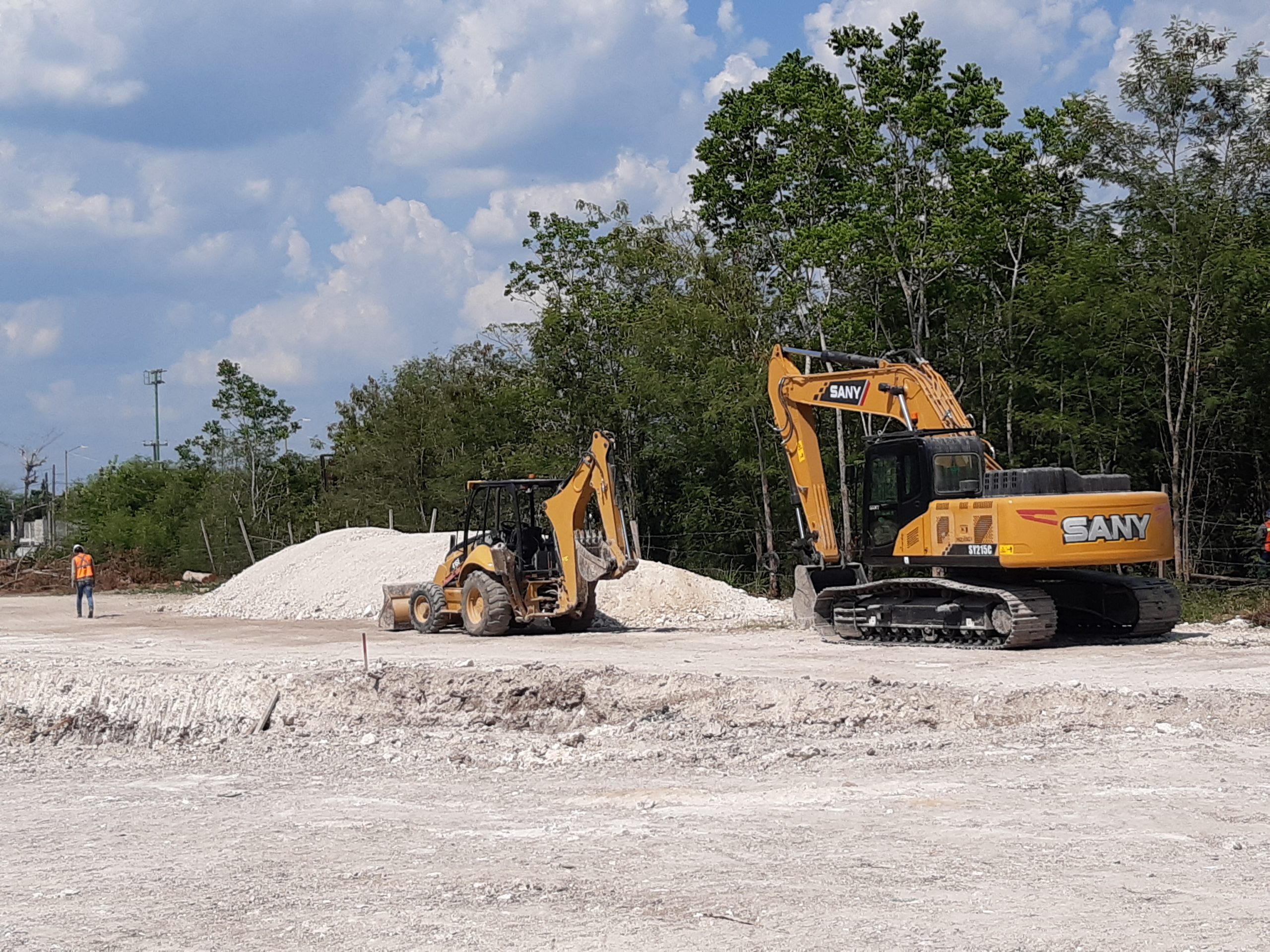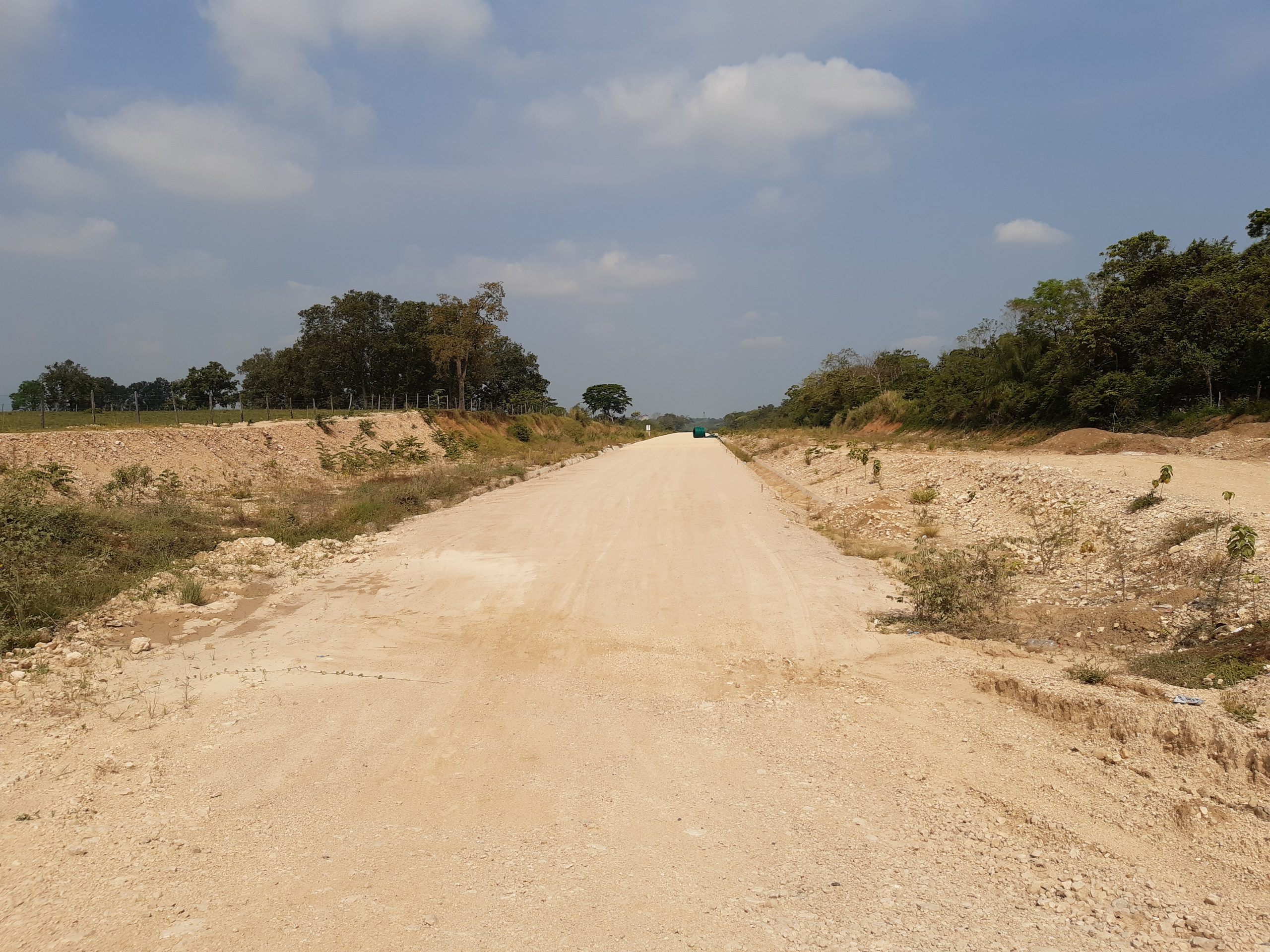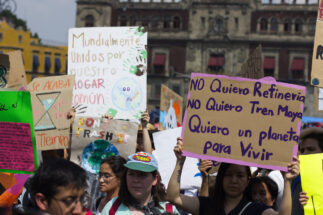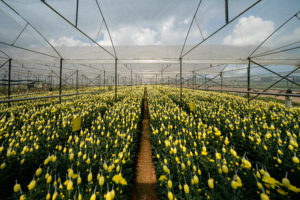Escárcega, a city of almost 60,000 inhabitants in the southeastern Mexican state of Campeche, lies on the route of the Mayan Train, an ambitious mega-project promoted by President Andrés Manuel López Obrador, widely known as AMLO. The train will pass through the city’s main avenue, a noisy street filled with traffic and shops, just a few metres from the municipal palace.
This Yucatecan city’s name nods to its historical ties to railways: it was named after Francisco Escárcega, head of the railway works in Mexico’s southeast, and has housed a small station since the 1930s. Now, more than 90 years later, Escárcega’s residents hope that the signature project overseen by AMLO and the National Fund for Tourism Development (FONATUR) will bring local benefits.
The Mayan Train
Launched in 2018 as a signature project of Mexico’s president AMLO, the Mayan Train is planned to cover 1,500 km on the Yucatán Peninsula, aiming to connect tourist destinations in the country’s southeast. It is targeted for completion in late 2023.
“We hope that it will bring jobs and tourists, and that people will come to visit,” shop employee Betsy Rodríguez told Diálogo Chino.
But a possible paradox lies in the Mayan Train’s aim of boosting a sustainable tourism industry. In other parts of the region, the project itself threatens unique attractions such as the cenotes (underground lakes), caves and the surrounding biome’s flora and fauna, all of which draw many thousands of visitors.
According to official sources, the Mayan Train will have 21 stations and 14 smaller stops (for embarking/disembarking) along some 1,500 kilometres of track. It will pass through 78 municipalities in the southern and southeastern states of Campeche, Chiapas, Quintana Roo, Yucatán, and Tabasco. The first three are in the Yucatán Peninsula, a renowned tourism hotspot that welcomes around 11 million visitors each year.
It is also home to important and fragile ecosystems, which opponents of the Mayan Train fear will suffer from the construction of a line that will also transport soybeans, palm oil and pork, the region’s main agricultural products.
A project with global interest
Today, much of the old train line’s metal skeleton has already been stripped, and its sleepers lie in a town nearby Escárcega, as Diálogo Chino saw on a recent visit along the route. A short wire fence separates the track from the neighbouring street, lined with empty houses.
In 2020, FONATUR assigned the construction of the first section of the Mayan Train to a consortium made up of Portugal’s Mota-Engil, the China Communications Construction Company (CCCC, which owns a 30% stake in the Portuguese infrastructure firm) and Mexican companies Grupo Cosh, Eyasa and Gavil Ingeniería. The section of the route will reportedly require an investment of more than US$630 million.
Section 1, the first of seven that make up the project, is 227 kilometres long and will depart from the municipality of Palenque (Chiapas), continuing to Boca del Cerro and El Triunfo in neighbouring Tabasco State, and finally arriving at Escárcega, in Campeche. The route will also stop in Candelaria (Campeche) and Tenosique (Tabasco).

Sergio Prieto is a researcher at El Colegio de la Frontera Sur (ECOSUR), a public investigation centre covering southern Mexico. For him, the railway seeks to reconfigure the territory and its economy – which has struggled to reconcile public and private interests – with tourism and job creation as primary motors of development.
“The idea is promoted that it is an alternative to an extractivist project [of natural resources], that it does not harm the environment. But it is not just a train, nor is it Mayan. It is a huge regional project that incorporates other initiatives,” he told Diálogo Chino.
Indeed, the Mayan Train risks significant environmental, cultural, economic, social and territorial impacts. Section 1 bisects two areas of high ecological impact in the jungle and rivers of Chiapas and Tabasco. This, as well as other developments along the planned route, has sparked protests from environmental organisations throughout Mexico, backed by singers and high-profile entertainers, generating a confrontation with AMLO.
Mayan Train construction against the clock
Despite changes being made to the routes, and the haste and presidential determination to push the project through despite opposition, the Mayan Train works are behind schedule, according to the Superior Auditor of the Federation (ASF), the national comptroller.
The construction of Section 1 began in 2020, without environmental impact studies or permits. Despite the project’s vicissitudes and complaints from environmental groups of its damage to the surrounding ecosystem, AMLO has promised that the train will whistle along the track by December 2023, against all odds.

Along Section 1, builders have already removed old rails, cleared paths for the new line, built vehicular bridges and erected stations.
Groups of workers on the project work 24 hours a day in alternating shifts, sometimes even on Sundays. They are now facing more complex tasks, such as installing the new track, constructing related buildings along the route, and operationalising electronic systems.
In a 2020 evaluation of the mega-project’s progress, the ASF had already drawn attention to delays, since it was reported that just a fifth of the work that was planned for 2019 and 2020 had been completed, due to the route’s redesign, the delay in obtaining rights of way and in the removal of the existing track, which FONATUR attributed to the Covid-19 pandemic.
In addition, ASF showed that the cost of the project swelled from US$7.3 billion dollars in 2019 to $8.8 billion the following year, with at least $13 million not properly accounted for.
The project will favour those who are already favoured, such as the tourism industry and the real estate industry
In Palenque – where AMLO enjoys a strong influence due to the presence of La Chingada, his ranch and holiday home – construction is progressing at a level similar to that of Escárcega. In Palenque’s Pakal-na neighbourhood, the route runs parallel to a highway, between secondary roads and forested areas, and near the old airport.
Cruz said this construction has ended up being more invasive and destructive than was initially promised: “The government said that there was only to be renovation [of the road], and we can see that this is not the case. There is a huge difference, because the impact is much stronger, because you have to dig again, remove soil, flora, and there are the effects on fauna.”
A 2021 study on wildlife in protected areas by researchers from ECOSUR concluded that the Mayan Train will exacerbate the fragmentation and deterioration of habitat quality in a period of only 10 years.
The report indicates that the surface area that this one project will affect equates to 15% of the 25,000 hectares lost due to construction of the region’s road network over the course of two centuries. Nonetheless, it says the train will have a greater environmental impact than that caused by roads, with “negative”, “direct”, “high magnitude” effects.
The loss of habitats caused by the operation of the railway could also increase significantly during the first decade of operation, due to the hypothetical promotion of agriculture and livestock farming driven by lower transportation costs.

The Mexican government claims that the project does not harm the environment and, on the contrary, works on its improvement. FONATUR argues that it can complement Sembrando Vida – the rural development programme that pays beneficiaries some US$250 per month for planting fruit and timber trees, and covers 142,852 hectares along the Mayan Train route. The programme already covers 19,707 hectares in Palenque and La Libertad, a neighbouring municipality.
Alfredo Sandoval, a taxi driver in Escárcega, trusts that the benefits of the railway will be distributed. “If there is money for one, there must be for all. More tourists are going to arrive and we have to be prepared,” he told Diálogo Chino.
For ECOSUR’s Prieto, the train can have enormous economic benefits. “But it will favour those who are already favoured, such as the tourism industry and the real estate industry,” he said.
“Concessions of large territorial extensions are given to private capital so that they can exploit the resources. It is going to trickle down those who get on the train, but we must see beyond the short term.”








